Reasons Why You Need a Hammock Camping Sleeping Pad for Your next Hammock Camping Trip
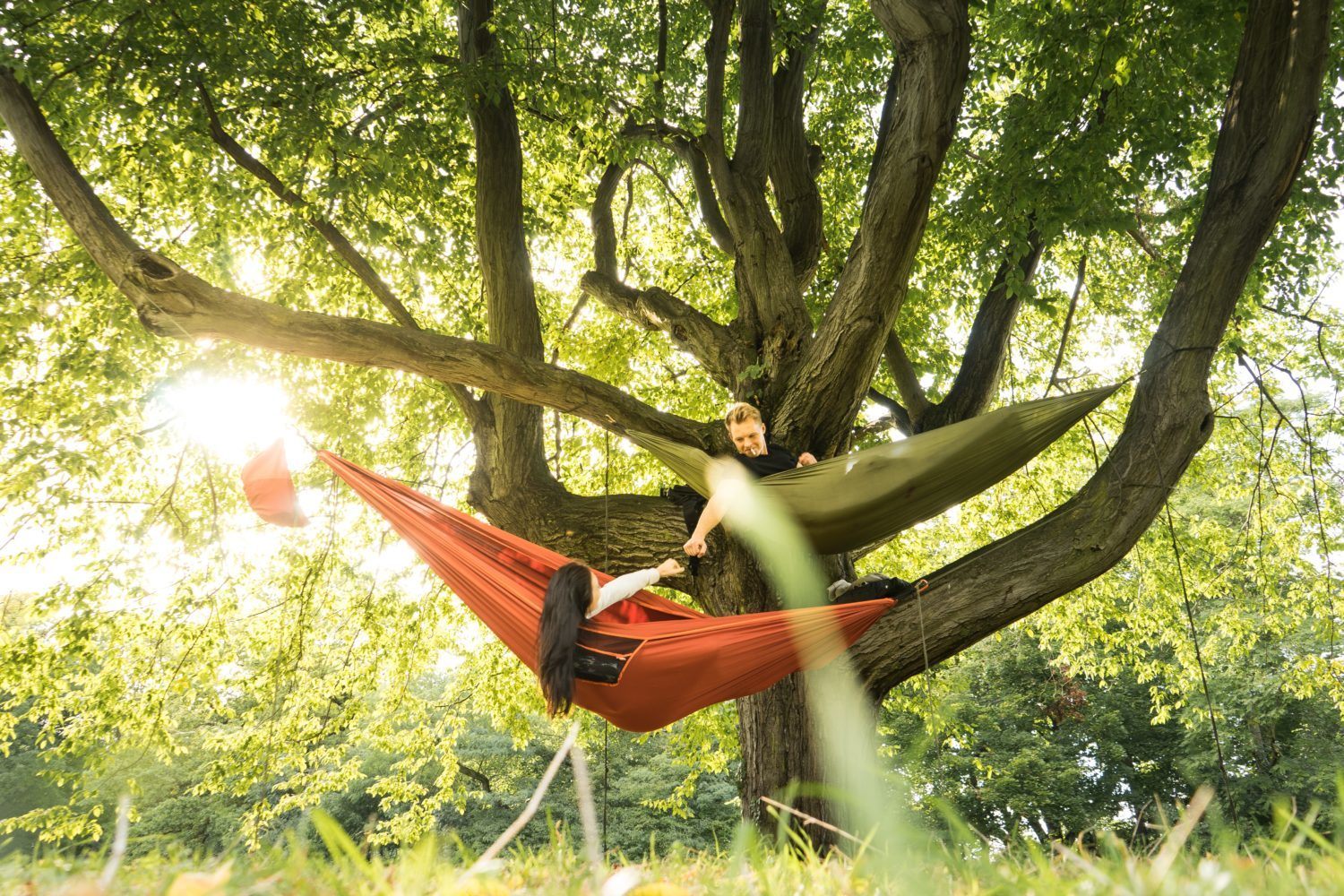
Are you planning a hammock camping vacation and can’t figure out if you need a sleeping pad for that? In this article, we have the best hammock camping sleeping pad tips and tricks you might need.
A sleeping pad can make hammock camping one of the best sleep experiences of any camping trip. Many hammock setups are designed to be used with or without a sleeping pad. Hammock camping with a sleeping pad provides added comfort.
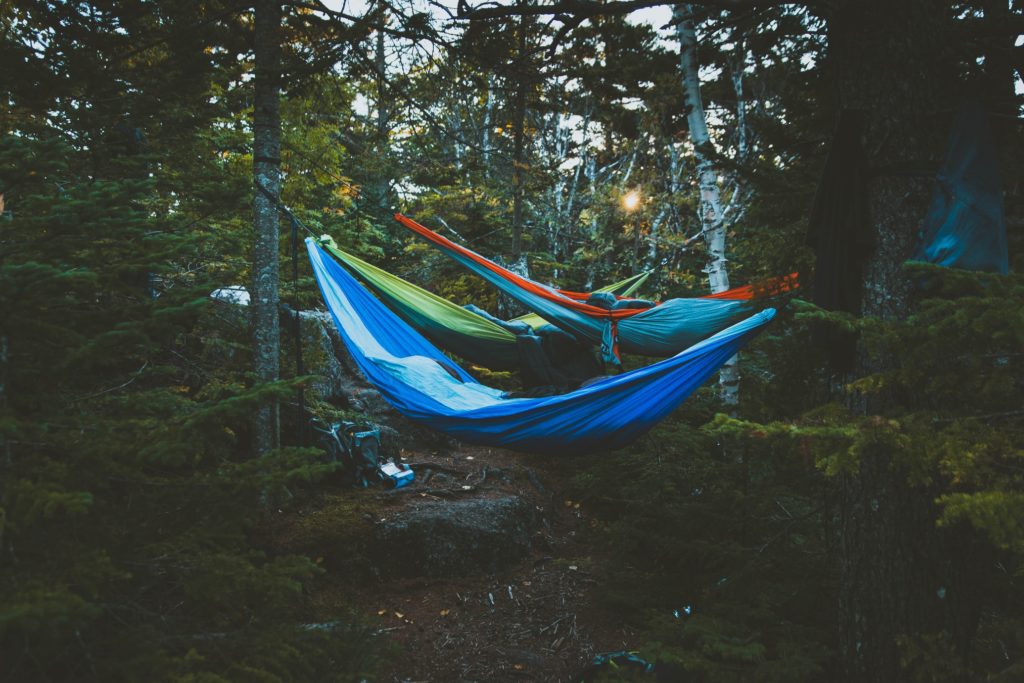
What are the Benefits of Using a Sleeping Pad with your Hammock?
Warmth Through Proper Insulation
Sleeping pads provide insulation from the air surrounding your hammock. Your sleeping bag will keep you comfortable on the top and the sides, but the pressure of your body will compress the bag beneath you. This means it isn’t able to keep you as warm in the underside of your hammock. Placing a sleeping pad between you and your hammock’s outer fabric will help you maintain a comfortable temperature throughout the night.
Flatter Sleeping Surface
When sleeping in a hammock, your body is often forced into a slight curve. Hammock camping with a sleeping pad can provide a much flatter surface for your body to lay on. A flat surface will make it easier for a hammock camper to adjust to their favorite sleeping position. Sleeping on your stomach or side is comfortable, but possible only in a hammock when you add a sleeping pad.
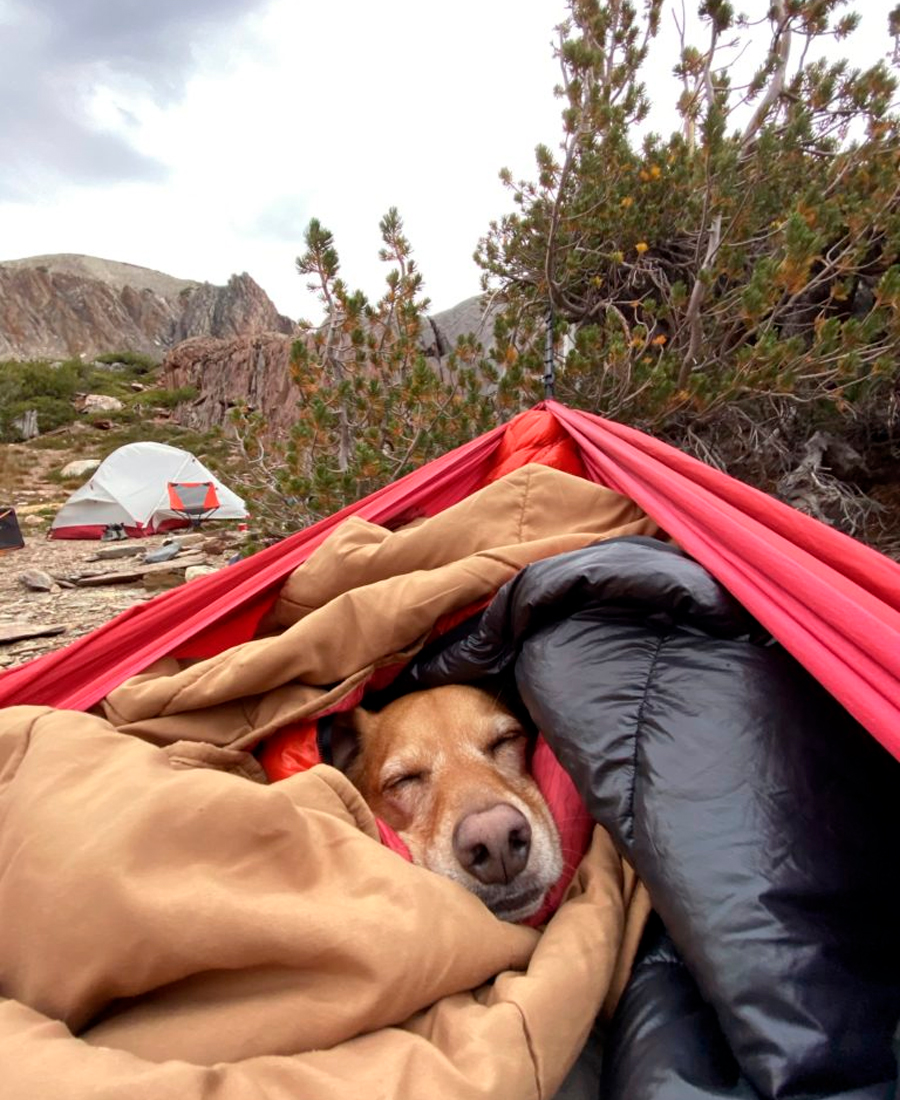
Back Support While Sleeping
Most camping hammocks are made of nylon. This thin material, while durable, doesn’t provide a lot of support. It’s intended to be flexible and light so you can take your hammock anywhere. If you’re someone who is looking for more support, you can create a more rigid structure with the use of a sleeping pad.
Versatility Throughout Your Camping Trip
Sleeping pads provide great versatility in use. In the event of a camping emergency, such as planning for hammock camping and finding there aren’t the right number or type of trees, you will be in the clear. With a sleeping pad, you’re able to camp directly on the ground if needed, or tent camping. Additionally, you can use your sleeping pad as a great seat cushion while you’re enjoying the great outdoors. If you spend time outside, you’re going to want to have a sleeping pad for these types of situations.
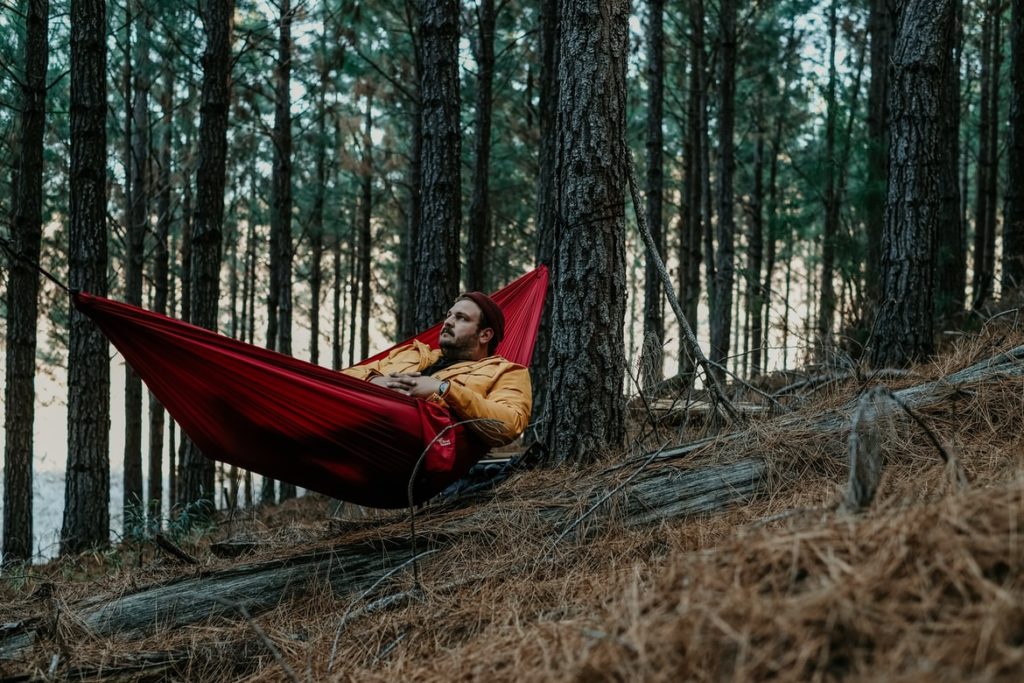
Cost-Effective
There are two options when it comes to insulation for your camping hammock, an underquilt or a sleeping pad. A sleeping pad is the most cost-effective option. Many sleeping pads are less expensive than an hammock underquilt. It’s important to note that a sleeping pad has a multitude of uses that an underquilt does not, making it the most cost-effective option in this situation.
Which Types of Sleeping Pads are Best for Hammocking?
Self-Inflating Sleeping Pads
If you’re looking for a firm mattress to use in your hammock, a self-inflating sleeping pad is a great option. The open-cell foam within the pad is flexible enough to mold to both your hammock and your body, yet rigid enough to provide support. You can add to the firmness of your sleeping pad with additional breaths of air into it. Self-inflating sleeping pads have some of the highest R-values. Don’t forget that not all sleeping pads are made for hammocking!
Inflatable Sleeping Pads
One of the best sleeping pads for a hammock is an inflatable sleeping pad. You can easily adjust the amount of air inside the pad so that it fits comfortably in your hammock. Air mats are known for their small packed size. They are lightweight and fold up to fit easily inside a backpack. The negative side of an inflatable sleeping pad is that it will require repairs to be useful if damaged. Many campers bring a small field repair kit on their camping trips, in case if this happens.
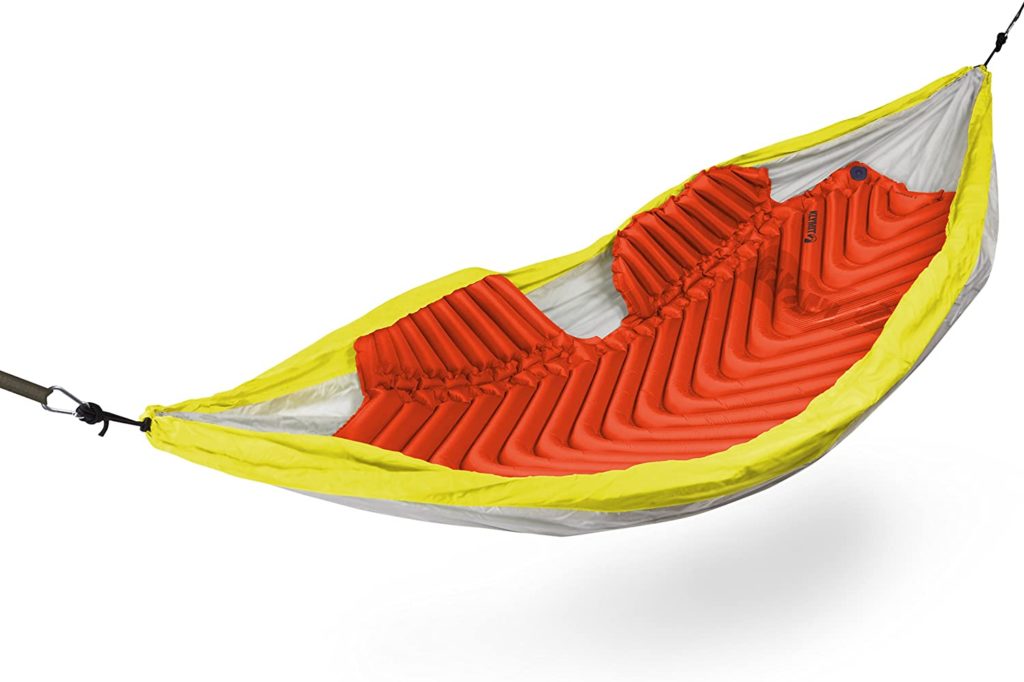
Foam Pads
Closed-cell foam sleeping pads are the most popular option for hammock campers. They’re light, making them a great option for someone looking to save weight with their hammock setup. Closed-cell foam pads make for a great hammock sleeping pad because they’re relatively inexpensive. Many hammock campers will cut their closed-cell foam pad to fit their hammock better. An added benefit of closed-cell foam pads is that they’re nearly indestructible. You won’t have to worry about damaging it beyond repair on a camping trip and being left without an important piece of gear.
What Gear Should I Use When Camping in a Hammock?
Aside from a sleeping pad, there are a few helpful items for hammocking that will enhance your camping experience
- Bug Net: If you’re hammock camping, a bug net is a necessity. If you want to enjoy a bug-free sleep, you should add a bug net to your gear collection.
- Rain Fly: A rain fly or hammock tarp is another important piece of equipment when hammock camping. Unless you can guarantee that there will be no rain on your camping trip, this is a necessary accessory as well. The rain fly is a large tarp that hangs over your suspended hammock. It’s designed to keep you dry while hammock camping. They can also act as a wind block, which will keep you warmer in your hammock at night.
- Ridgeline Organizer: Organize all of the gear you might need for the night with a ridgeline organizer. Keep your headlamp, water, and pocket knife nearby while you sleep. One of the difficulties of hammock camping is not having the space to store your important items close to you throughout the night.

Tips For Using A Hammock Camping Sleeping Pad
- Opt for a hammock-specific sleeping pad: Purchase a sleeping pad designed for hammock use, or a hammock pad. Many include “wings” for support and insulation of your shoulders, arms, and hips. These hammocks are designed to fit into a hammock perfectly, unlike your everyday camping mattress.
- Use a hammock with double-layer fabric: They manufacture hammocks designed to hold a sleeping pad! The double-layer fabric or pocket provides a sleeve for your sleeping pad to slide right into. This means you will experience the comfort of hammocking with a sleeping pad without having to worry about it shifting around in the middle of the night.
- Underinflate your Sleeping Pad: This allows your sleeping pad the flexibility it needs to fit into your hammock and hang. Your sleeping pad must be inflated enough so that its insulation properties are not being sacrificed for its flexibility.
- Put your sleeping pad in a sleeping bag: If you’re looking to minimize the amount of movement your sleeping pad has throughout the night, here’s a solution. Slide your sleeping pad into your sleeping bag and then climb in! This is a great hack for hammock campers.
- Add an underquilt for additional warmth: If you’re hammock camping or winter hammock camping, add an underquilt for extra warmth. Underquilts are a hammocking accessory that attaches to your hammock and provides additional insulation from the cold weather and wind.
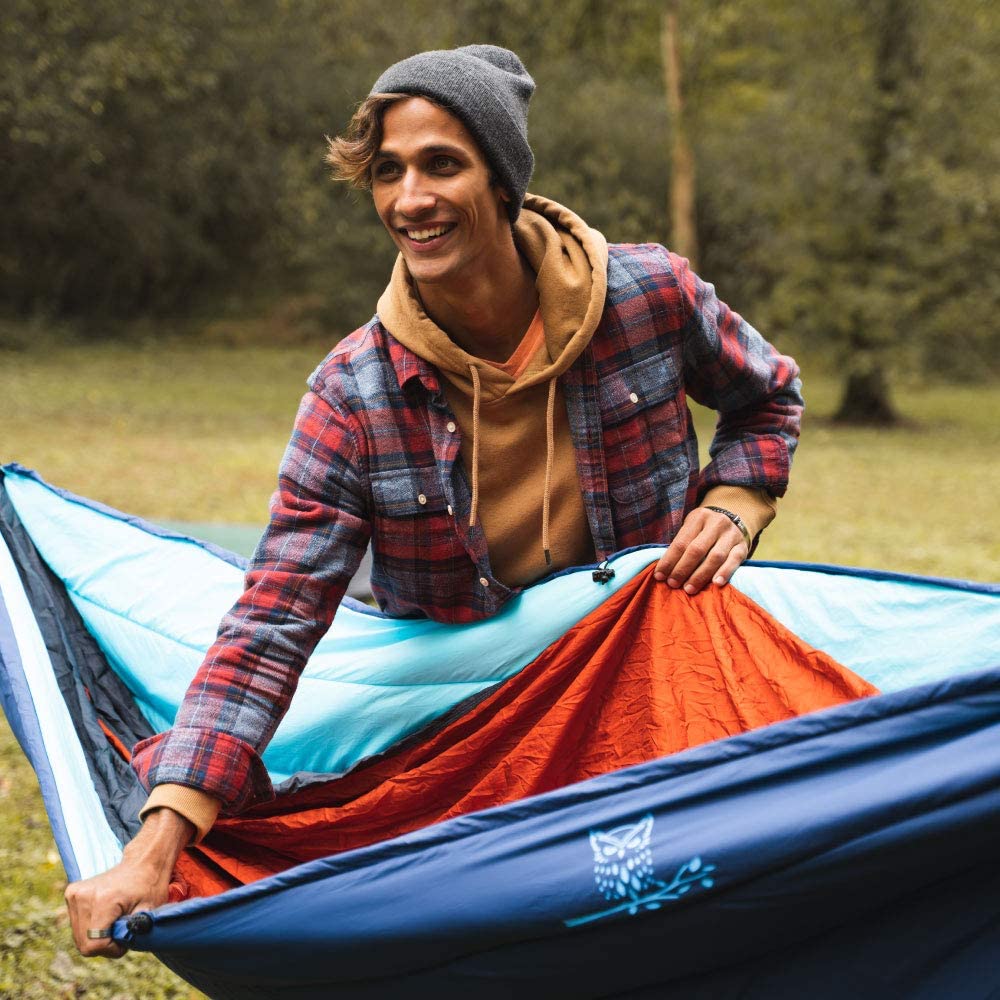
Conclusion: Hammock Camping Sleeping Pad
A sleeping pad is a great accessory to add to your hammock setup. Not only will your sleeping pad keep you warm and provide structure to your sleeping platform, but it might also come in handy in other situations.
If you’re looking to improve your hammock camping experience, adding a sleeping pad is a necessity! We hope our article helped you with deciding what hammock camping sleeping pad you need, and how to use one.




